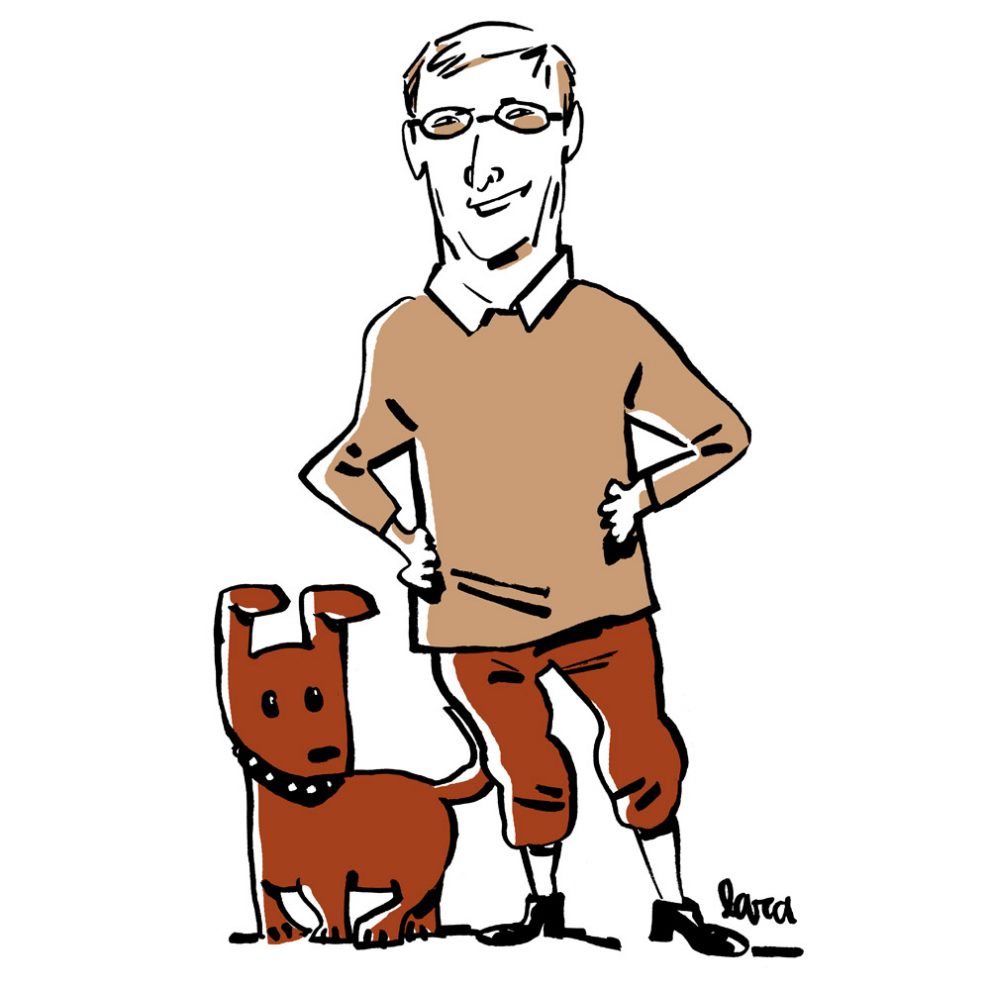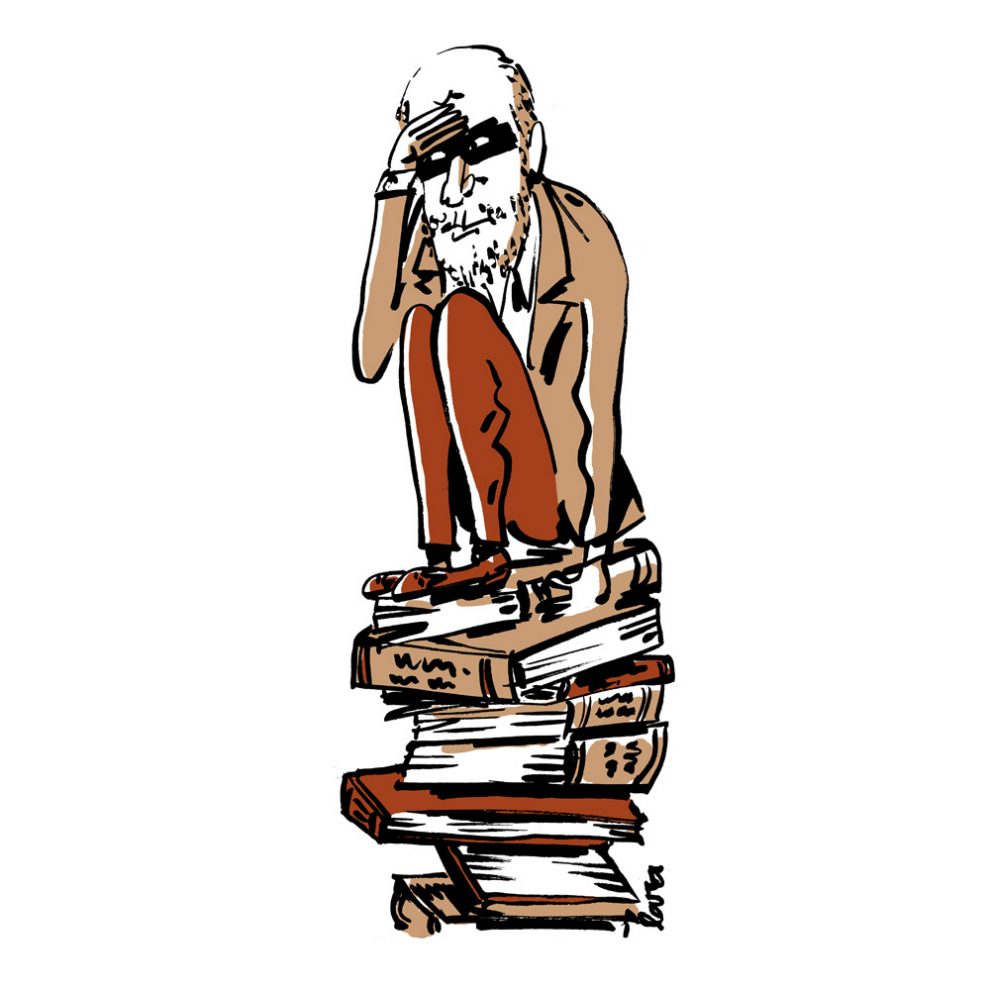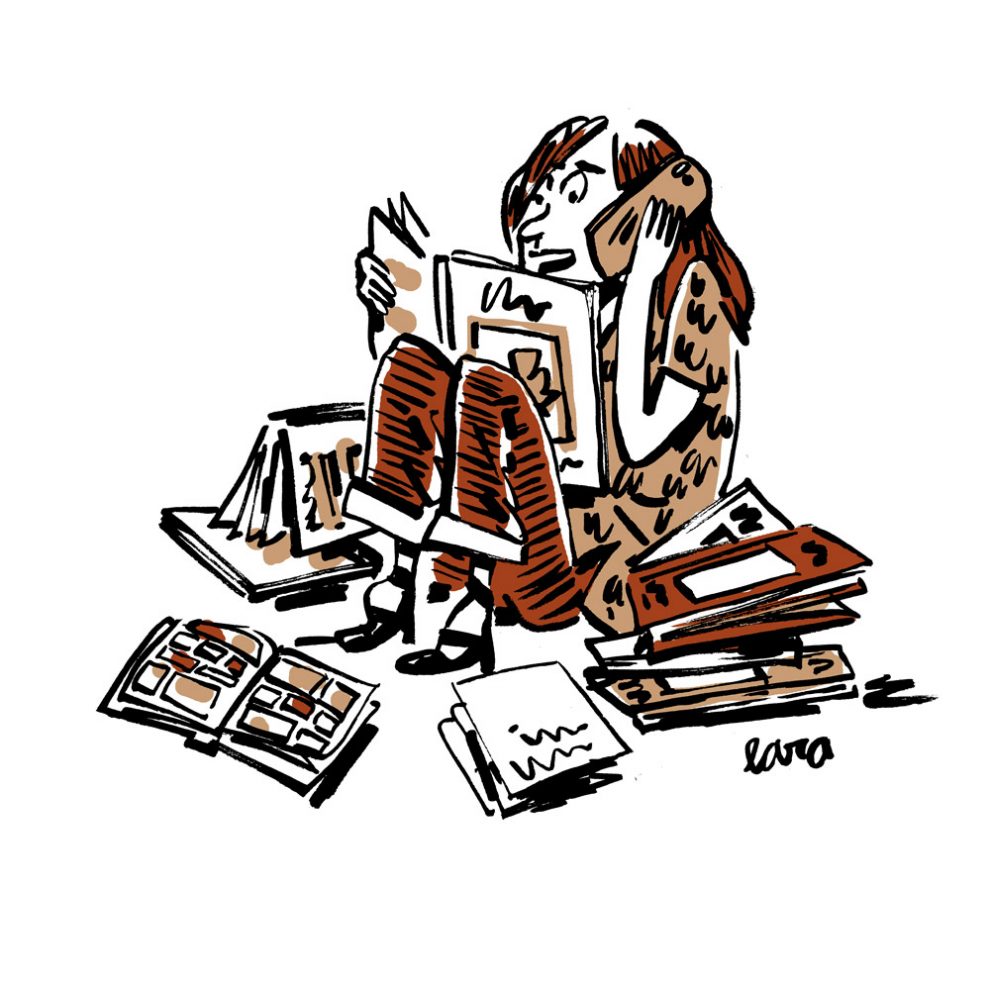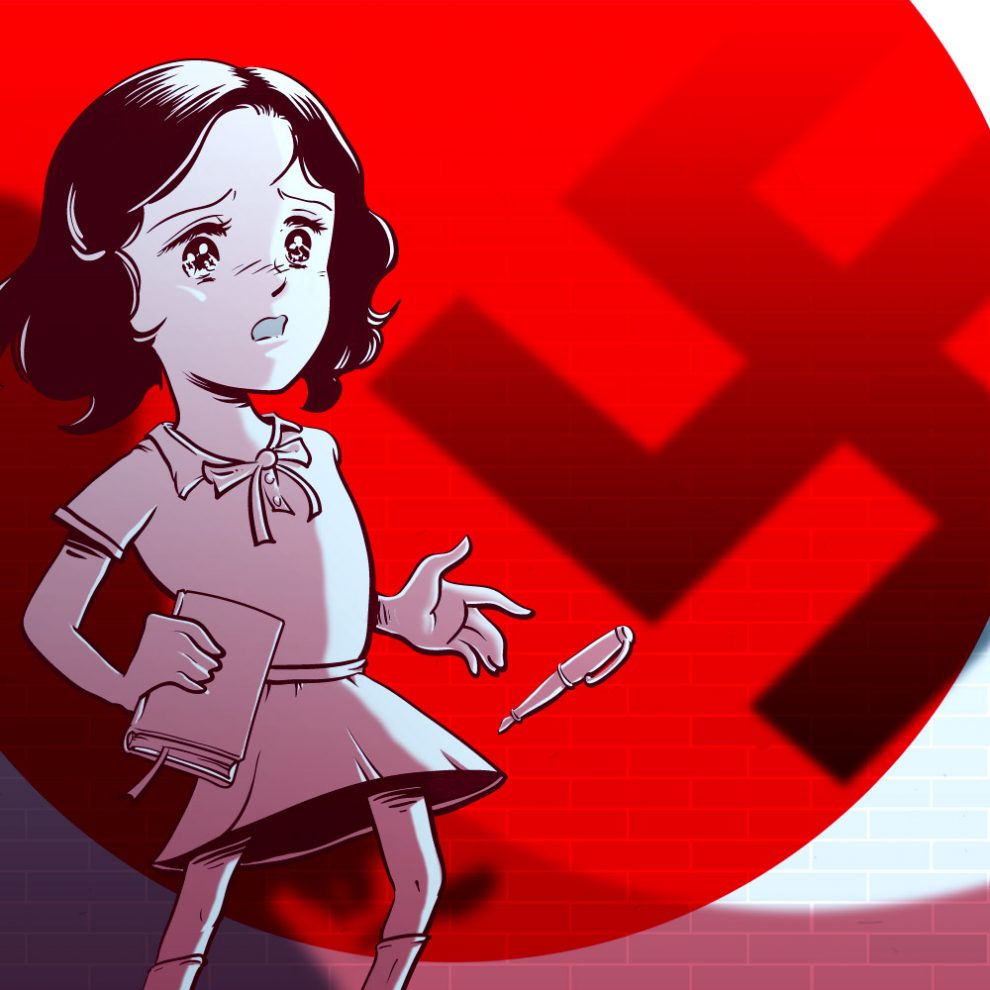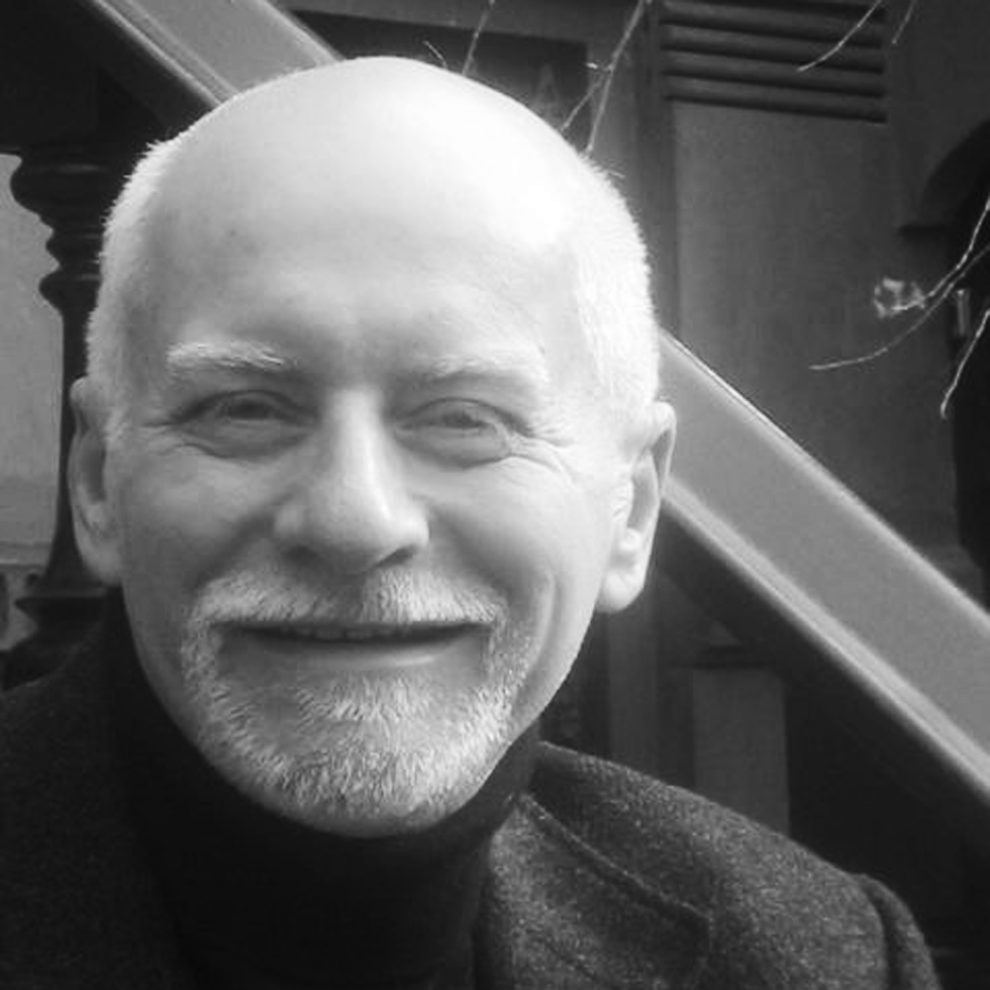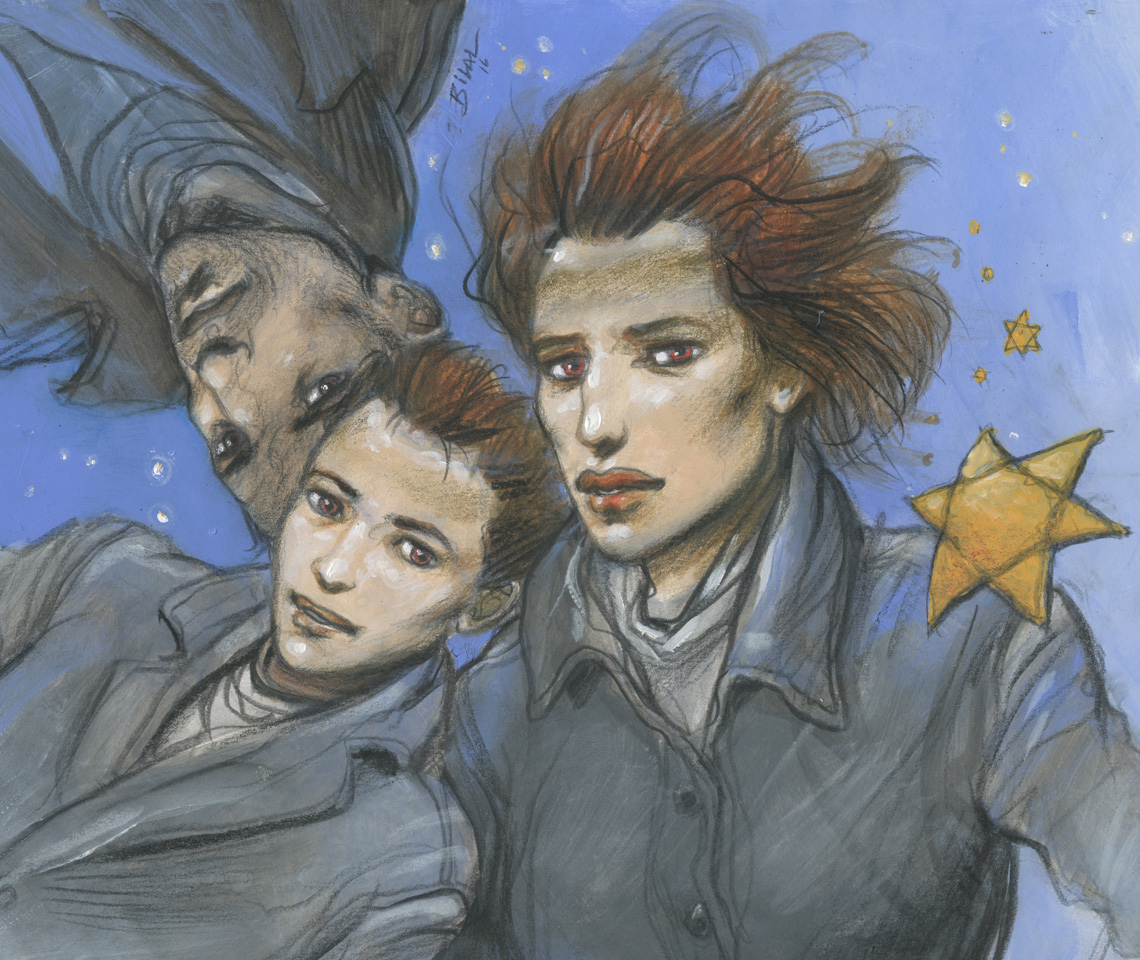
19 January to 30 October 2017
Here you can find out about resources (interviews, publications, etc.) based on the exhibition’s theme.
What the exhibition curators have to say
THE HOLOCAUST AND COMICS: FROM SHADOW TO LIGHT
1942-2017: 75 years of the Holocaust in comics
Hundreds of artists have taken the Holocaust as their theme since 1942. As the victims and witnesses of this unprecedented crime pass away, the matter of its representation grows in importance. The cursor lies between realistic, factual transcription, horror, its truth and historicity and its freest possible artistic evocation.
Comics have been a major mediation and memory transmission tool for years —especially today, when they fill the world’s greatest museums. Many people are familiar with Art Spiegelman’s masterpiece Maus, but some will be surprised at the number and originality of comics about the Holocaust since the war […].
Far from being comprehensive, the exhibition sharpens our view of comics and offers an exclusive preview of work coming out in the next few years to which we will be paying particular attention. The Memorial is highlighting not just 75 years of depictions of the Holocaust, but also outstanding examples of creativity in comics from around the world.
Marie-Édith Agostini, Joël Kotek and Didier Pasamonik.
What will you be able to see in the exhibition?
Some of the greatest masterpieces in the history of comics will be on display at the Shoah Memorial from 19 January to 30 October 2017.
The exhibition will include the exceptional Mickey au camp de Gurs (Mickey Mouse in the Gurs Camp), a forerunner of Maus, which Horst Rosenthal made in captivity in 1942 before being gassed at Auschwitz; Edmond-François Calvo, Victor Dancette and Jacques Zimmermann’s La Bête est morte!, the first depiction of the Holocaust in comics; drawings of the Holocaust by Jean Graton, who later created Michel Vaillant, for Uncle Paul in Spirou in 1952; Jack Davis’ cover for Krigstein and Feldstein’s Master Race, the first representation of the Holocaust in the United States; Wolinski’s drawings for Charlie Hebdo; Miriam Katin, the only Holocaust survivor who testified in comics; Jean-Philippe Stassen’s Déogratias, “the Tutsi Maus”; Art Spiegelman’s Maus, which revolutionized comics; Bilal’s poster for the exhibition; David Lloyd’s illustrations of Alan Moore’s V for Vendetta; Israeli Michel Kichka‘s Second Generation; and work by scores of great artists ranging from the classic Paul Gillon, José Muñoz and Will Eisner, the pioneer of American comics, who has accompanied this subject on the sidelines since the 1940s, Joe Kubert, who already dealt with the topic 30 years before Yossel, to younger ones such as Poland’s Krzysztof Gawronkiewicz, Israeli Asaf Hanuka, who won the Eisner Award for best foreign author in 2016, the unsettling British artist John Coulthart and the elegant illustrator Fanny Michaëlis.
The exhibition curators
The exhibition poster
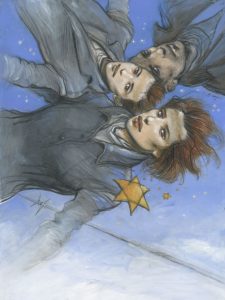
Filmmaker, artist and comic-book author Enki Bilal created the painting used for the exhibition’s poster. This is what he said about it:
“Everybody is free to interpret this work. It is about liberation, indestructibility, eternity… But sometimes words are weak.”
Interview with Chris Claremont, legendary author of the X-Men comics
Chris Claremont, the man who made Magneto a Holocaust survivor. Interview by Philippe Guedj.
(The full text is available in The Holocaust and Comics catalogue, 2017 © Mémorial de la Shoah/Denoël Graphic.)
Chris Claremont, the legendary author of the X-Men comics from 1975 to 1991, ushered the series into adulthood by giving the bad mutant Magneto a tragic past directly connected to the Holocaust. The genial Mr. Claremont agreed to tell us about some of the keys to his inspiration before coming to Paris in January 2017.
You lived on a kibbutz in 1970. Did that have anything to do with giving Magneto Jewish roots?
The experience left a deep impression on me. In 1970, I was 20. America was up to its neck in Vietnam, where I had no desire to go and fight. I was a student at a small, left-wing college where Hannah Arendt’s husband was a professor of political theory. In January and February, the school closed to encourage us to do a field internship relating to our theoretical studies. The previous year, I’d done my internship at Marvel. I really wanted to find something that had a relationship to political theory, which fascinated me. An ad in The Village Voice mentioned the possibility of living on a kibbutz in Israel […] So in January, I went to Tel Aviv by way of Paris and spent two months working on a kibbutz in the Elah Valley near the Jordanian border, where, I learned, David had fought Goliath […].
Publication
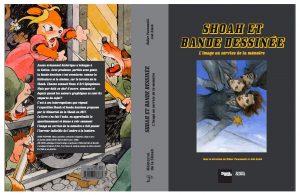
Catalogue of the exhibition The Holocaust and Comics, Mémorial de la Shoah/Éditions Denoël Graphic 2017 (144 pages, 200 illustrations): €29.90
Available at the Shoah Memorial bookshop and online.
No historical event escapes fiction. Carefully, sometimes brilliantly, comic books, like literature and cinema, ventured out onto the terrain of the Holocaust. Everybody knows Art Spiegelman’s Maus, but how many other comic-book authors have also written about the topic? In 2017, the Shoah Memorial tries to answer that question with The Holocaust and Comics. The catalogue delves more deeply into the issue, showing how images at the service of memory have brought unspeakable horror out of the darkness and into the light.
Publisher, journalist and exhibition curator Didier Pasamonik is also responsible for special supplements of comics at L’Express (latest published: Gotlib). Belgian political scientist and historian Joël Kotek is a professor at the Free University of Brussels and teaches at Sciences Po Paris. He has written many books and articles about the Holocaust and other genocides.
